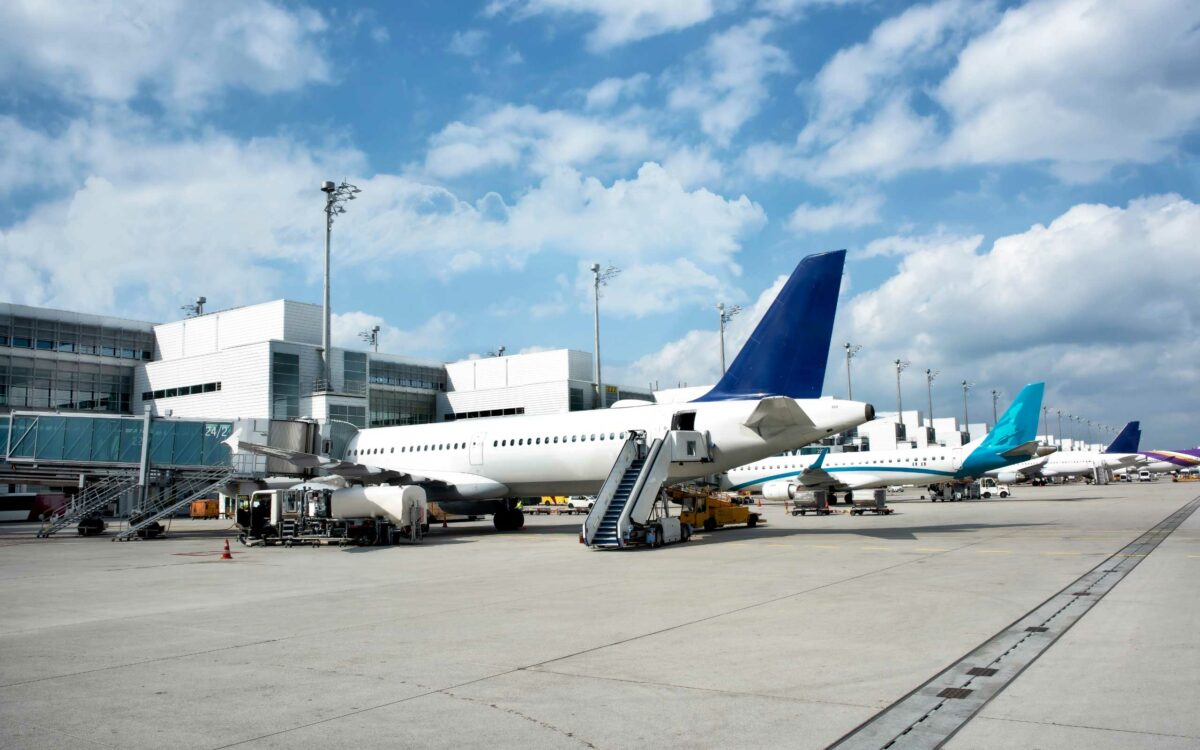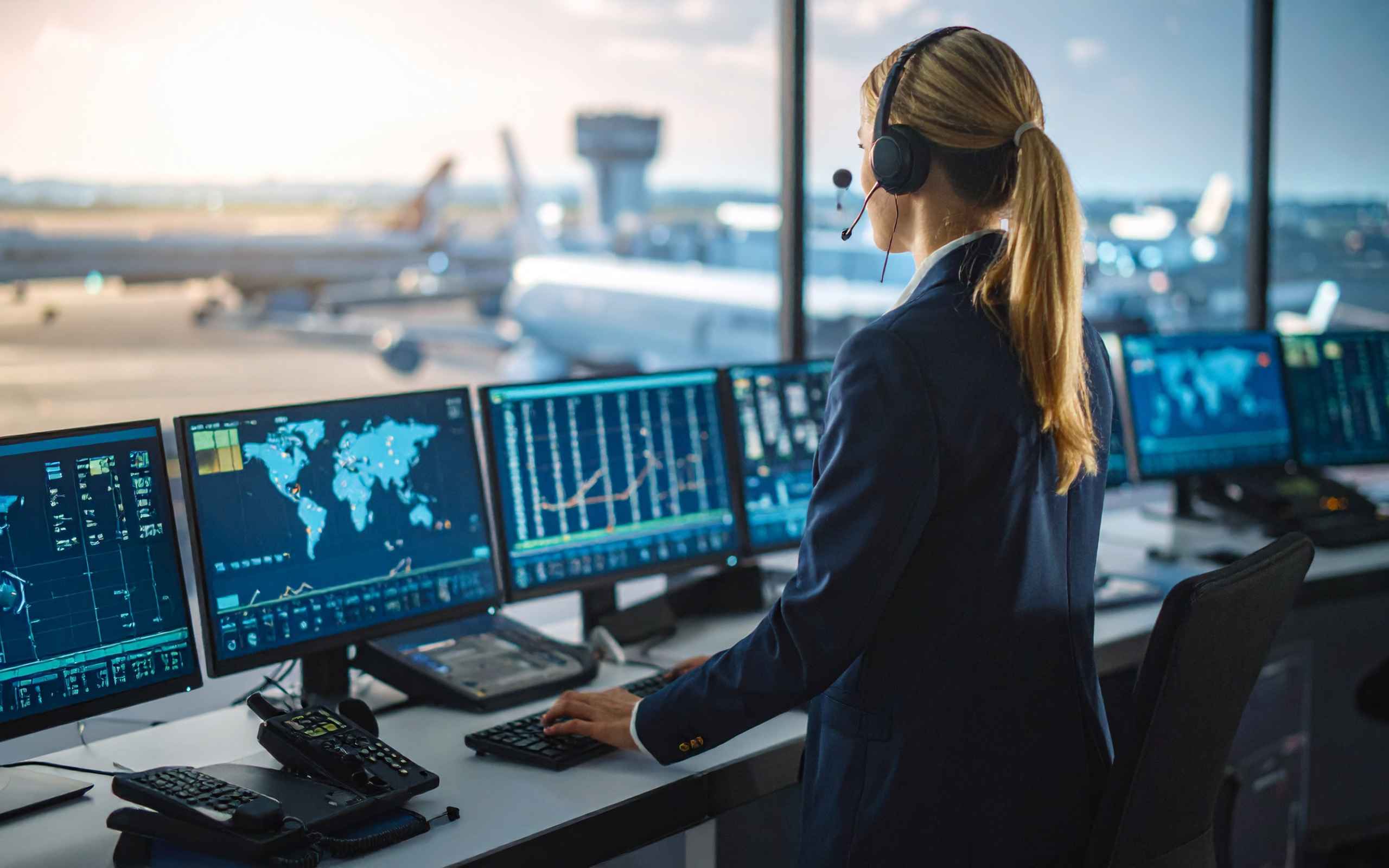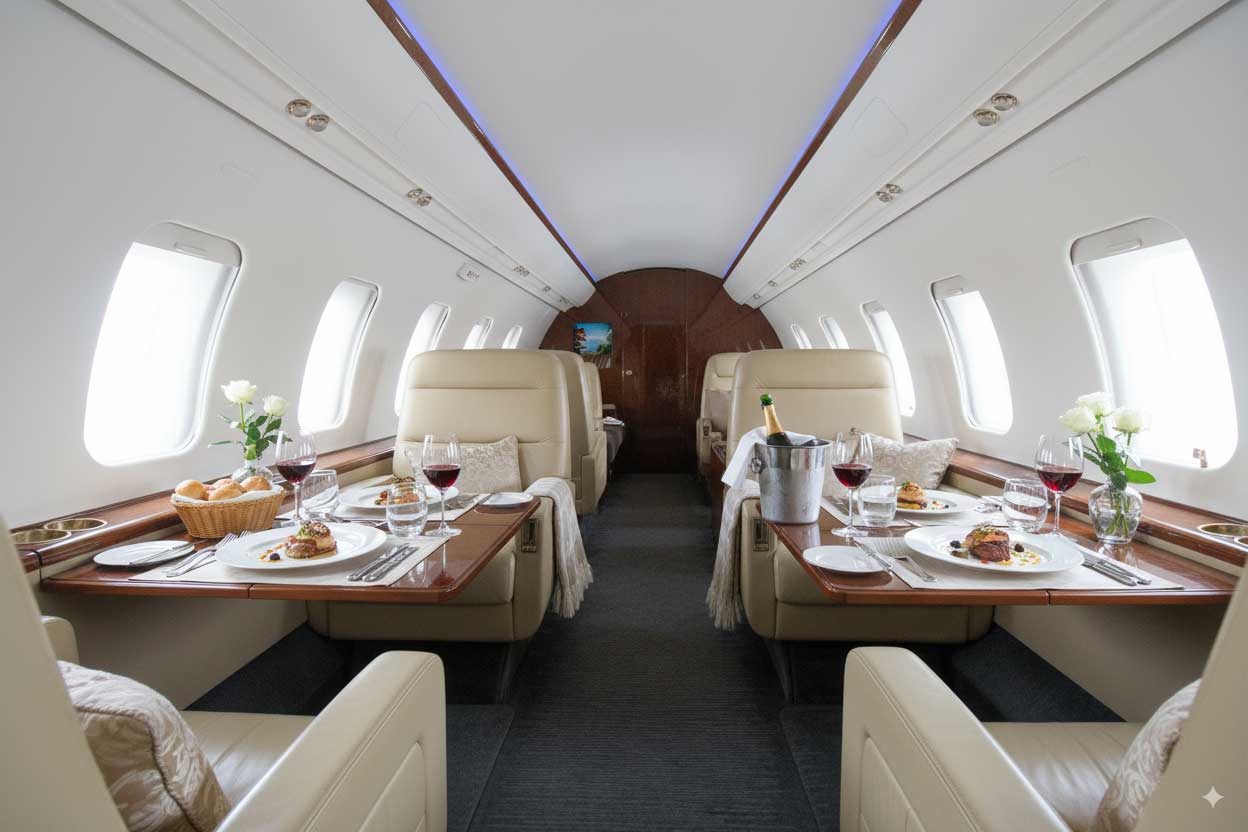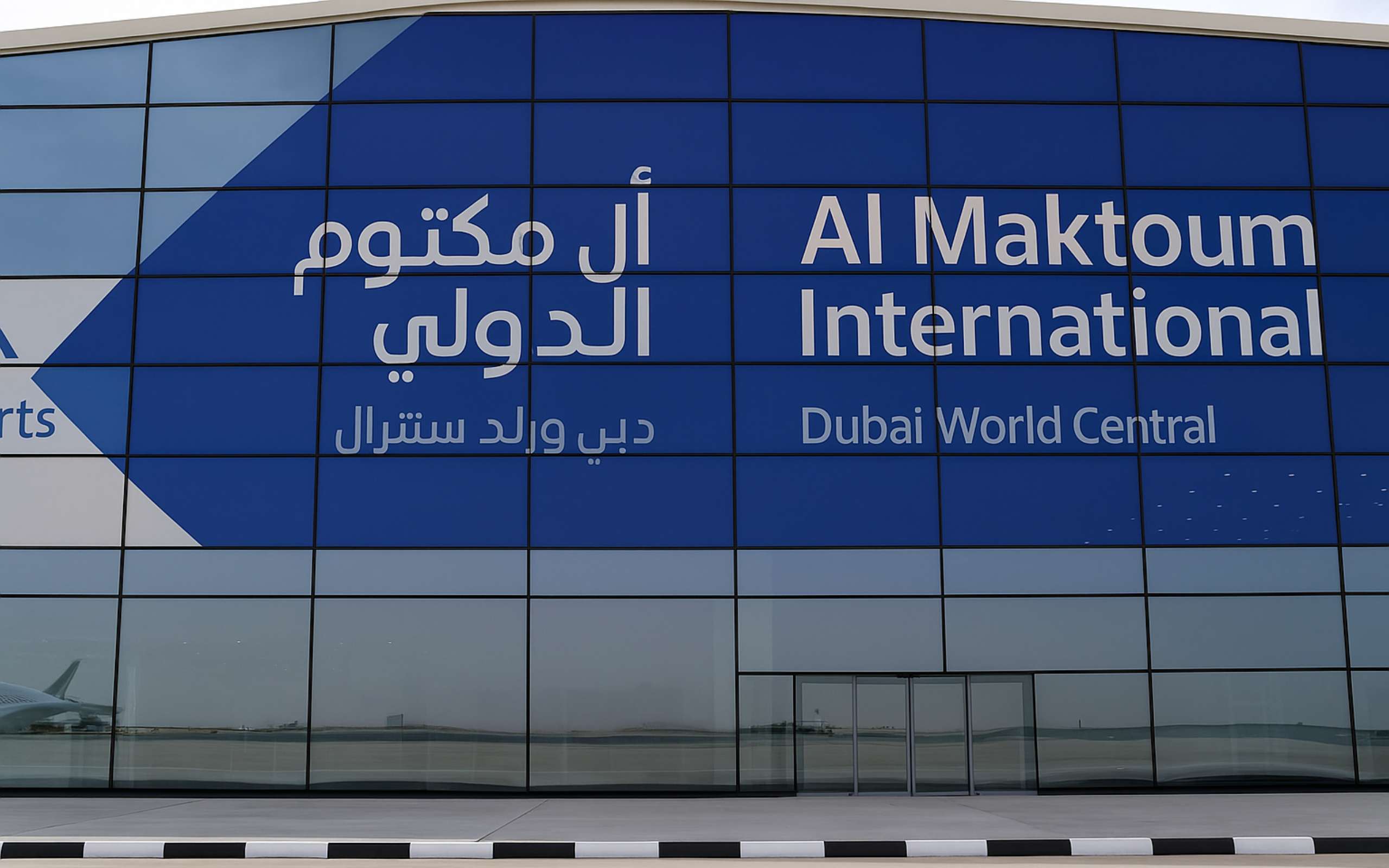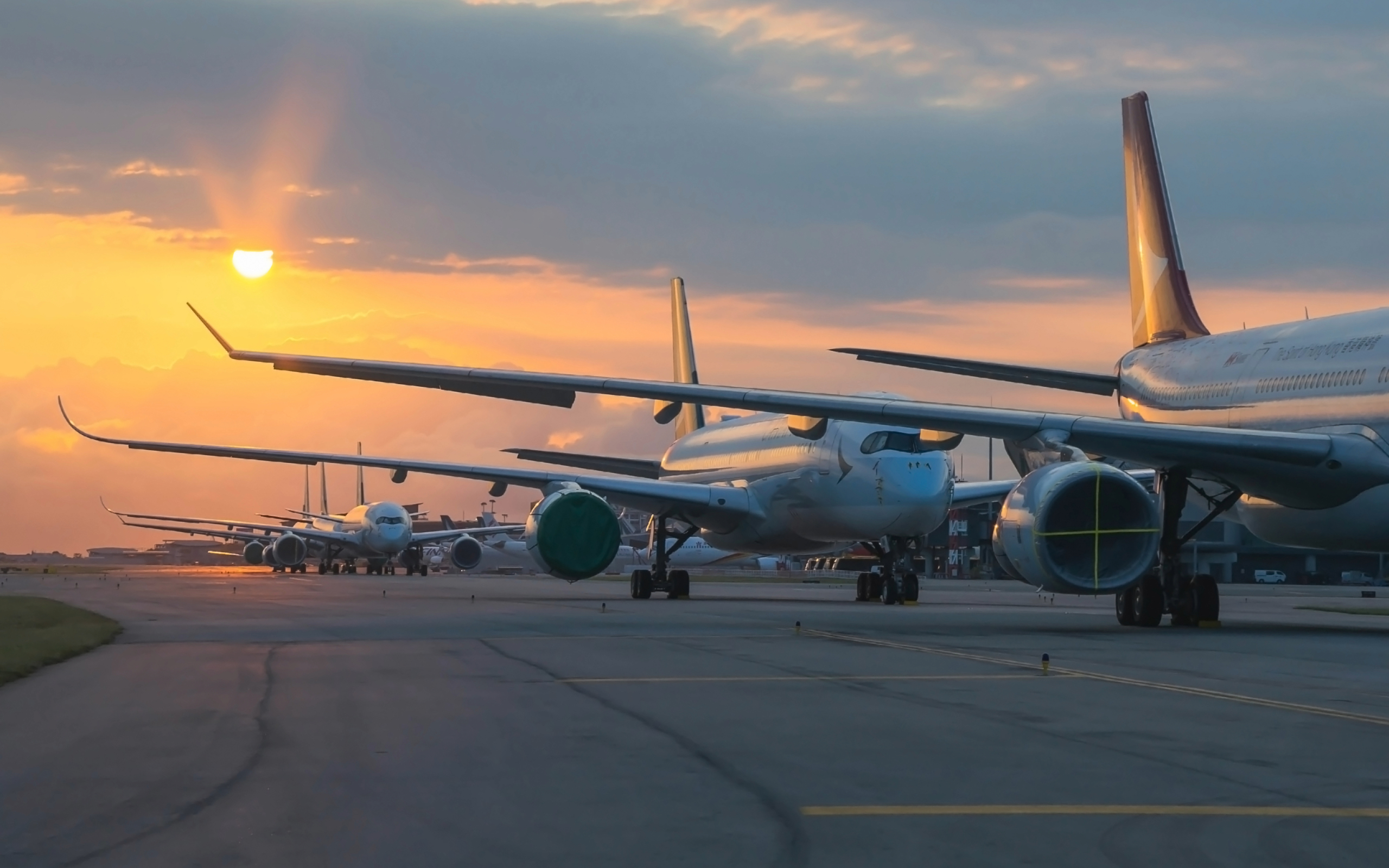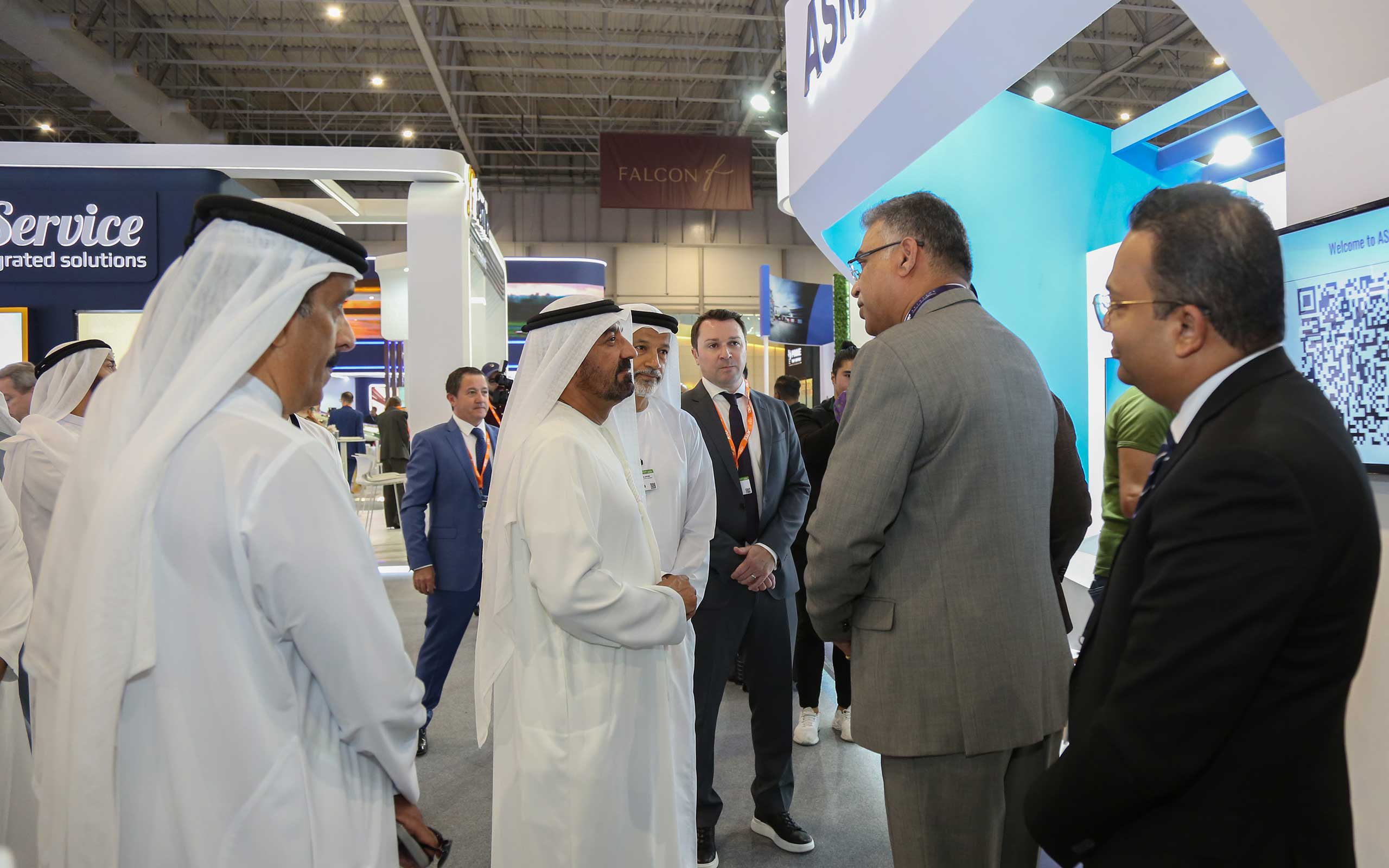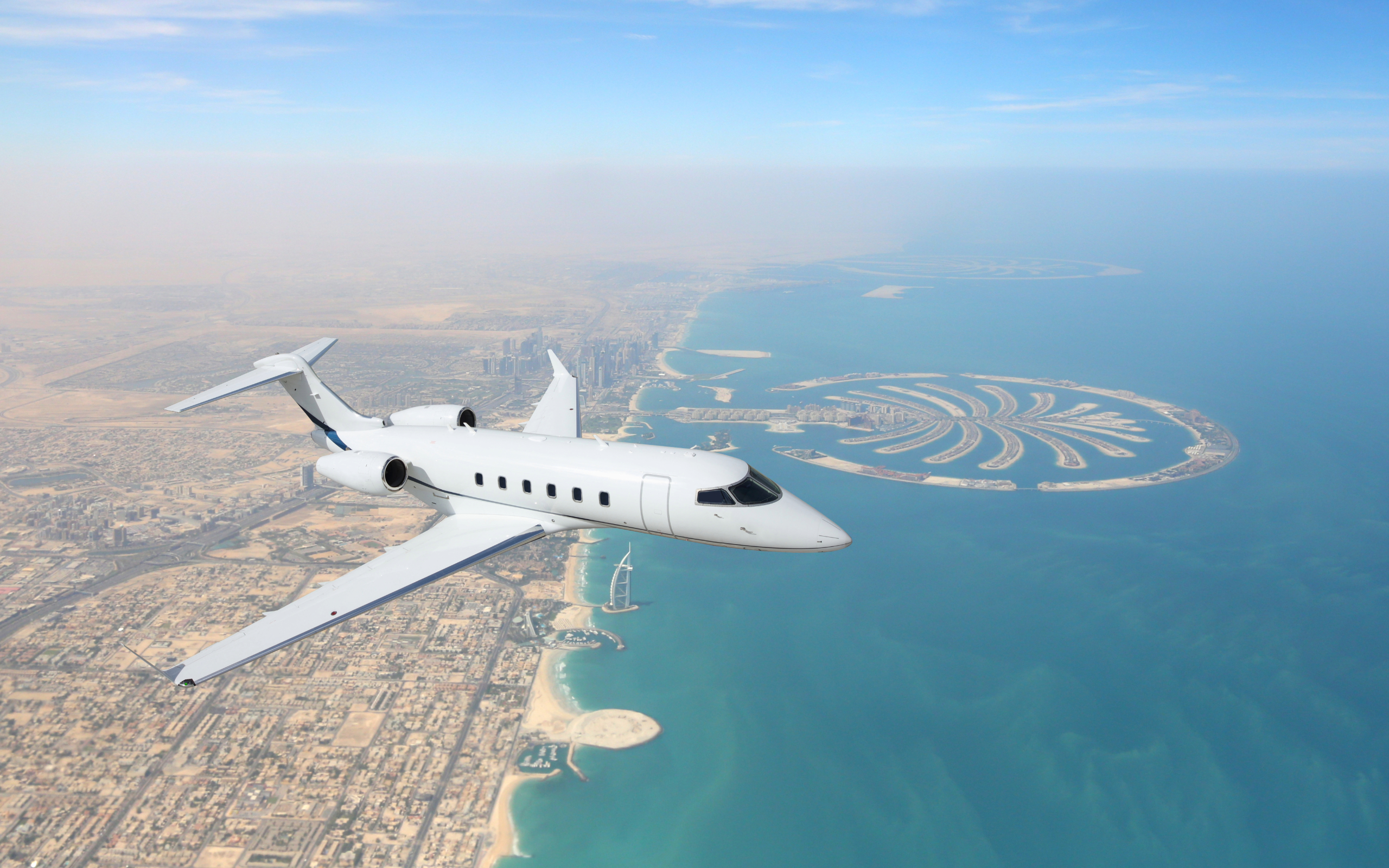
Napoleon once said: “Let China sleep, for when the dragon awakes she will shake the world.” Given the latest economic data, his comment would seem to anticipate the rapid growth of China. It also predicts significant growth in much of Asia. Jeffrey Chiang, senior sales manager at Hong Kong-headquartered Asia Jet, says this growth is seismic.
Asia Jet caters to the UHNW population. They also serve Asian and global businesses and medical service providers. As a result, Asia Jet has seen significant growth in charter demand in Asia. Much of this is due to the rapid wealth accumulation of the rich in Asia. Many clients are starting to view business aviation as an efficiency tool. This view is similar to the perception in Europe and the USA’s more mature markets. The region tends to be dominated by heavy or ultra-long-range jets in North Asia. In Southeast Asia, mid or super-mid jets are more common, says Chiang. Generally speaking, clients in the region still prefer the space and grandeur of a bigger jet.
Table of Contents
Asia Jet clients typically travel to various destinations. These include regional holiday hotspots such as the Maldives, Thailand, Indonesia, and Japan. Business users often fly between financial centres including Beijing, Shanghai, Hong Kong, Singapore, and Tokyo. In recent years, the economies in Southeast Asia have advanced. As a result, the company has seen an increase in business travel to Malaysia, the Philippines, and Indonesia.
The global economy is tilting towards the East; four of the Fortune Global Top 10 companies are Asian. The Huron Report tracks the changes in China’s entrepreneurial community. It says that China has 568 dollar billionaires compared with 535 in the US. Beijing has the most billionaires by city. But this is just one side of the potential source of new charter customers. As the influence of Asia grows, businesses in the rest of the world are showing an interest.
Flight Support Provider
Vito Gomes is the CEO and founder of flight support provider Aviation Services Management. He observes that international business-makers are focusing more on Asia. According to an IATA report, four of the top ten scheduled passenger markets are China, Japan, India, and Indonesia. IATA also predicts that China will overtake the USA as the biggest passenger traffic market by 2035, while India is expected to go from seventh place to third and Indonesia from tenth to fifth.
Gomes attributes the shift in economic interests to the East firstly to a cross-region commitment to reforms. This commitment comes from larger Asian countries such as Malaysia, Japan, India, and Singapore. Consolidating regional developments will create a strong economic union with improved long-term prospects. In contrast, the Middle East is challenged by political and economic instabilities, he says. He adds that Asia has enjoyed huge population growth and has seen an increase in consumer demand as a consequence. This has attracted international corporations that have boosted the economy with foreign direct investment. These investments have improved employment opportunities. This, in turn, has expanded the number and influence of the middle and upper classes. “This is the starting point from which business aviation growth will come,” he says.
Jetex Flight Support also finds that aircraft-sharing platforms and businesses have expanded aircraft accessibility. This has made them more available to a larger Asian clientele. Head of Lifestyle Gabriel Meza says the company is seeing consistent demand from increasingly discerning and tech-savvy charter clients. Key charter airports and markets include Shanghai, Beijing, Hong Kong, Macau, Bangkok, Singapore and Kuala Lumpur. Europe is a popular destination. Africa is also in demand because there are not enough premium airlines servicing routes between this continent and Asia.
The client profile
Hong Kong-headquartered L’Voyage is the first Wyvern-approved broker in Asia. It has developed its own internal bespoke customer relationship and mobile technology systems. Founder and chair Diana Chou has been in the general aviation industry in Asia for the past 19 years. Initially, business tycoons in the region made charter requests. They would fly to meet their clients in the US or Europe. Today, they are also for medical tourism, family reunions, and shopping the world’s fashion capitals. Additionally, people use them for visiting prospective schools or viewing properties to invest in. Families charter flights to see relatives in different provinces or other countries for the Chinese New Year celebrations. Many families take their furry four-legged family members along as well.
L’Voyage has started offering medical tourism flights to Thailand or Japan. These flights are for sophisticated body testing. Some of the tests are based on gene mapping technology. They also offer lightening facials. It also arranges highly bespoke tours, the most popular being pet travel packages in Japan.
Asian Sky Group business operations manager Carmen Chan says clients are now looking for more bespoke travel. “We see many requests for tailored travel trips. These include not only a chartered aircraft but also hotel packages and different outings. Clients may want shopping and adventure.” Her clients are travelling all over the world. The demand for long-range aircraft is up, especially for flights to North America, Europe, Australia, and New Zealand.
Chou is now catering to a younger generation of very wealthy self-made clients. These clients are particularly in China. Fast-paced economic growth has created international successes there. Domestic flights still make up about 95 per cent of total business travel spend in China. However, it is typical for L’Voyage to receive requests from Chinese investors. Young entrepreneurs wish to fly overseas for investment site visits. They aim to meet business partners in multiple cities in one day.
Where customers are based is also slowly evolving. In interior cities like Dalian, Chengdu, and Chongqing, China’s population of ultra-rich individuals has been growing at a faster rate. This growth surpasses that in traditional hubs like Beijing, Shanghai, and Shenzhen. Enquiries from overseas operators to assist with client trips in Asia have also risen sharply. In 2017 the number of requests L’Voyage received from European and American operators increased by over 40 per cent.
Aircraft charter versus ownership
There is a preference in Asia for charter over ownership. This is because registration issues can make owning an aircraft problematic. Additionally, the lack of established maintenance facilities adds to the difficulty. Flying the aircraft to Europe or the USA for general maintenance can be an expensive procedure. UK-based brokerage 365 Aviation has been actively involved in the Asian aviation market for seven years. Their primary focus is within India and Kazakhstan. They have also chartered flights to the USA and Europe.
Occasionally, they extend their services further afield to places like South America. The hot spots are Japan, Singapore, Australia and holiday destinations such as Indonesia. The company also services Western clients looking to explore untouched parts of Asia. This usually involves a group flying into a major international hub on a commercial airline. They then transfer to a private jet for their onward travel. Cessnas and Hawkers are popular as they have good performance and comfort but are economical.
It also flies clients directly from Europe and the USA into Asia. The flights are usually non-stop on a Global 6000 or a Gulfstream G650. Chairman Colin Baker says: “Our record is from Philadelphia direct to Delhi, non-stop in 15 hours.” The biggest potential market is China. Baker is waiting to see more Chinese clients coming in with greater fluidity. He says the business jet fleet there grew quickly before President Xi Jinping took power in 2012, but since then sales have dropped sharply due to stricter capital controls, economic uncertainty and the crackdown on corruption.
This has proved to be good news for chartering. Many charter companies, 365 Aviation included, are seeing a surge in demand. However, Baker notes that China remains a largely internal market. People deal with long-standing and established personal and corporate networks there. A degree of patience is required to truly penetrate this territory.
Experience on the ground
For Chou, it is crucial to be familiar with the various airspace restrictions across Asia. It is also important to understand the political climate and local peak holiday seasons that might affect flight plans. Her team maintains good relations with the many domestic operators. They specialise in local airport operations. Therefore, her team is always able to provide alternative solutions where necessary. Because of the fast pace of growth in the air charter industry, service quality has varied across Asia. Some private jet operators represent individual owners. These operators are not trained up to international standards, but this is slowly changing.
Even though demand is growing at a healthy rate, the infrastructure in the region is still severely lacking. Slots in Hong Kong are a major headache. Trying to secure overnight parking in Beijing is also difficult, says Asia Jet’s Chiang. Even overfly or landing permits for certain countries can take significantly longer to secure than in Europe or the US. “China’s focus on bolstering its civil aviation industry under its 13th Five-Year Plan is a welcome change but more needs to be done in other parts of Asia to alleviate the infrastructure bottleneck in order for business aviation to flourish and realise its potential,” he says. “We also see associations such as AsBAA helping to improve the overall operational landscape, which promises a brighter future for all industry players and clients that rely on business aviation.”
Florida brokerage Monarch Air Group notes the shortage of aircraft available for charter. The company has a long-term government contract in Asia for the provision of firefighting helicopters. President David Gitman observes that the available aircraft often do not adhere to established audit standards. These include third-party standards such as ARGUS or Wyvern.
This non-compliance means Monarch Air Group must complete its own audit before the charter can take place. He says: “Thanks to our long-term contract, we have a physical presence that allows us to conduct our audits. Yet, we still face difficulties sometimes.” He refers to a specific charter demand from a European client. The client was on vacation. They had requested a flight from Phu Quoc Airport in Vietnam to Siem Reap International Airport in Cambodia. “What should have been a 40-minute hop turned into a longer journey. The flight became four hours because of all the positioning legs that became necessary.”
Jetex’s Meza notes that, despite the market being fairly competitive, the lack of general aviation infrastructure causes fewer quality FBOs. It also leads to more complex operations and higher operating costs for aircraft based in Asia. These are all factors that affect the number of aircraft based in the region he says. Most airports have tight regulations resulting in rigid permit approval processes, limited slots and poorer service for business aviation clients.
Chan notes an increase in charter requests in Asia. As a result, there has been growth in the number of small charter companies being set up. Additionally, aircraft owners in Asia are now more open to chartering out their aircraft. This change optimises their operating costs. It also increases capacity.
Red tape and other regional differences
California-headquartered Le Bas International has grown its presence in Asia since it began operations in Hong Kong several years ago. Nowadays the company tends to take sports teams and wealthy people in and out, but it’s not all plain sailing. Diplomatic landing clearances create a lot of red tape. COO Tracey Deakin says, “It’s not like in the US or Europe where you can just get up and go.” It can take 10 days to get a permit. This delay for getting an aircraft into Asia is holding the market back.”
Le Bas tends to send one of its own team to accompany large flights. This helps manage cultural differences and different procedures regarding entry and departure approval. These include stamps, passports, and sometimes letters from whoever a client is going to visit. Le Bas has agents on the ground there. It also collaborates with vendors who have the ‘wherewithal and experience to get the job done’. But the region is highly populated and trains have long offered a sophisticated transport option. The wealthiest are using air charter. However, Deakin feels the region has huge potential. It falls behind the rest of the world in terms of business volume. Executive jet users are primarily global travellers; inter-regional travel seems wedded to the train.
Sometimes, there are restrictions, especially in Hong Kong and mainland China. These restrictions prevent passengers’ departure and arrival time requirements from being met, adds Chan. In mainland China, there are restrictions on foreign-registered aircraft parking for a given number of days. If a stop-over exceeds this, the aircraft must leave the airport. It then returns to pick up passengers. Several countries have cabotage restrictions. These restrictions prevent foreign-registered aircraft from travelling domestically within a country. In these cases, passengers have to switch to a locally-registered aircraft for the remainder of their journey.
In the US or Europe, an end user can hire a broker to compare different charter operators. However, Chan says this is not so in Asia. Currently, Asia-based passengers are searching for and sourcing their own charter operators. They often look for the lowest price and will try out several different operators. In Europe and the US, clients more often deal with one broker for all their needs.
“The market in Asia is more saturated and we see diversified brokerage businesses in the region,” adds Meza. “These businesses wear many hats and integrate services including, but not limited to, aircraft sales and maintenance into their portfolio.
According to Baker, a distinguishing feature of the Chinese market is that clients generally look at price first. This is the initial focus in a quote. This focus comes even before considering the aircraft type. “You could generalise and divide clients’ priorities globally. Characterise the North American market as focused on safety and security. Europe prioritises the quality of the aircraft and service. Asia is price-driven,” he says. “Perhaps this is because they don’t have as much experience as their Western counterparts. They don’t differentiate the quality of aircraft and service as much. That will no doubt change. This is especially true as the next generation of internationally educated children comes to the fore.”
365 Aviation CEO Chris Tofts adds that jet ownership used to be seen as a status symbol. Now, businesses are focused more on the practicalities of flying privately. They appreciate the increased productivity and efficiency it offers. He says: “The money is there, as is a desire for luxury. However, as with all new markets, educating clients on the benefit of chartering over ownership is the starting point.”
He is witnessing growing demand in Thailand, Malaysia, Singapore, and Indonesia. Gulfstream, Bombardier, and Falcons are the most demanded aircraft. As Asian businesses grow both in the region and internationally, he expects to see demand rise further. But the region needs more FBOs and the airspace restrictions in China must be addressed. He adds that the overhaul of Singapore’s Seletar airport will be welcomed by private passengers. Its new $50 million passenger terminal is due for completion by the end of 2018. It will also be welcomed by charter businesses alike.
He has seen some firsts in the Asian market. A Boeing 787 Dreamliner in full VIP configuration, along with a state bedroom, was delivered earlier this year. Additionally, a 777-200 in an all-business class configuration was also delivered. Both offer a far greater range in the wide-bodied segment than their predecessor the 767, and smaller brother the 757. He feels that these are game-changing for UHNWIs.
Monarch Air Group’s Gitman says that Asian charter clients demand brand-new aircraft when they come to the US. They, like clients from Europe and particularly the CIS countries, also require gourmet catering. This is standard in Asia. This applies not just on heavy and long-range jets but on mid-size and light jets as well.
Tourism is fuelling air charter growth in the Philippines and in the Southeast Asia region. PhilJets MD Thierry Tea says: “The geographic features of the Philippines lend it to air charter services. The same is true of Malaysia and Indonesia, which are composed of a group of islands.” Southeast Asia has a lot to offer to tourists and travellers. However, the Philippines, being an archipelago, is more difficult to traverse than many of its neighbouring countries. Inter-country travel requires island transfer via boats, ferries, and domestic flights. As a result, air charter is becoming a practical option for saving time and offering convenience.
The Philippines’ National Tourism Development Plan forecasts 7.4 million international visits during 2018. Tourists seek out undiscovered islands. PhilJets expects to gain more air transfers and aerial tours from these visitors. Top destinations include Siargao Island, Surigao, Taal, the Banuae Rice Terraces, Hundred Islands National Park and Batanes. And in Thailand transfers are needed to reach the islands of Koh Samui and Koh Phangan.
Air charter can be beneficial for transport in less-developed countries. Tea says, “Where road congestion is bad, businesses cannot afford to miss opportunities. These missed opportunities can be more costly than a chartered flight.” Southeast Asia hosts large festivals and conventions. These events draw huge crowds. Air charter is becoming one of the most convenient ways to avoid road closures or flight delays.
Improvements to airport infrastructure will likely facilitate brokerage in the region. An increase in FBOs will also support all facets of the charter industry. There are many different regulations within the region instead of just one standard. Charges related to business aviation appear to be some of the highest in the world.
The future is opening skies and changing regulations
Asia Sky Group’s Chan notes that the region is developing more airports. China is a particular focus in this development. However, not all of these airports will cater to business aviation. This situation leads to issues of limited slot availability and restrictions on parking. Local aviation authorities are working to change this she says, along with groups like AsBAA. Jetex believes the impact of China’s Belt and Road initiative may affect cargo charters. There is much less impact on business flights.
L’Voyage’s Chou predicts that air charter broker demand in the Asia Pacific region will continue to rise. Many Asian countries have among the highest number of billionaires. Yet, they offer the lowest number of charter jets per billionaire. For example, greater China has 609 billionaires. They have a total of just 70 charter private jets to choose from. In comparison, the United States has 552 billionaires who can choose from over 2,600 private aircraft. She expects the Belt and Road initiative to boost private jet charters. Entrepreneurs in the region will forge new global business links. Investment site visits from China will pivot from traditional hubs in Asia towards Belt and Road countries. Today, her primary client base is in Hong Kong, Macau, and China. Together, they form the biggest charter market in Asia.
It is also worth noting that Asia, as the world’s biggest continent, has an overall population of 4.4 billion people but just 1,155 business jets, according to Asian Sky Group research. In contrast, the US has more than 13,000 aircraft for 336 million inhabitants. But things will change. For example, China has earmarked business aviation as a major development area in its 13th Five-Year Plan (2016-2020). It plans to build 260 new airports. There are certainly opportunities within Asia. European or US charter companies can help fill these opportunities. Asia’s business aviation ambitions and changing regulations certainly require close watch.
Charter Broker, print issue (April 2018) page 17)
For further information, please contact:
Aviation Services Management FZE
Suite 217, 8WB, DAFZA, Dubai, UAE
Tel: +971 4 4097755
Email: sales@asm.aero
Contact Us

